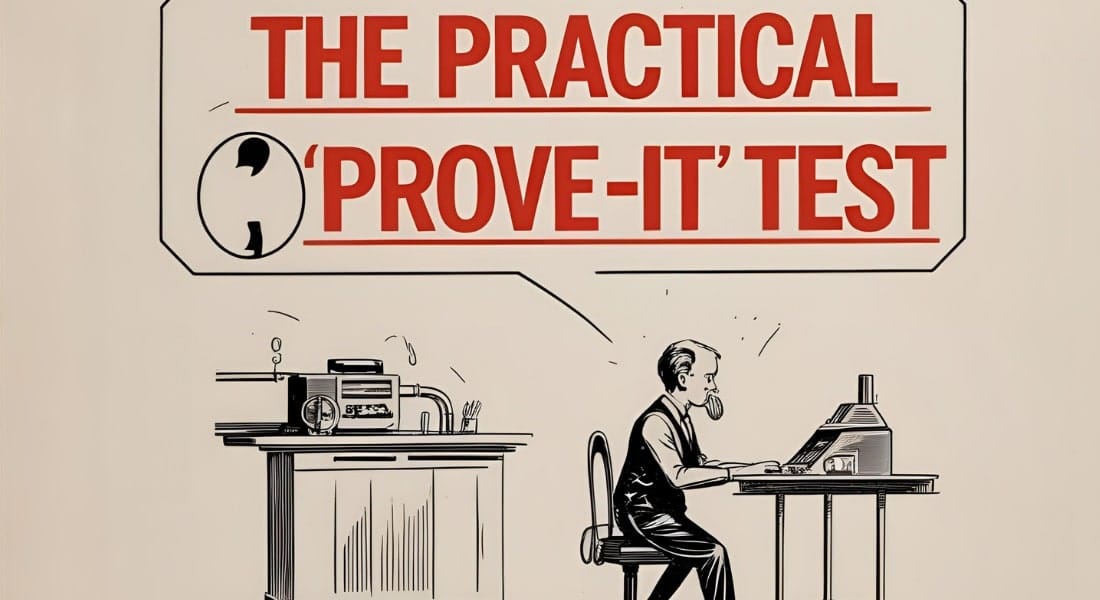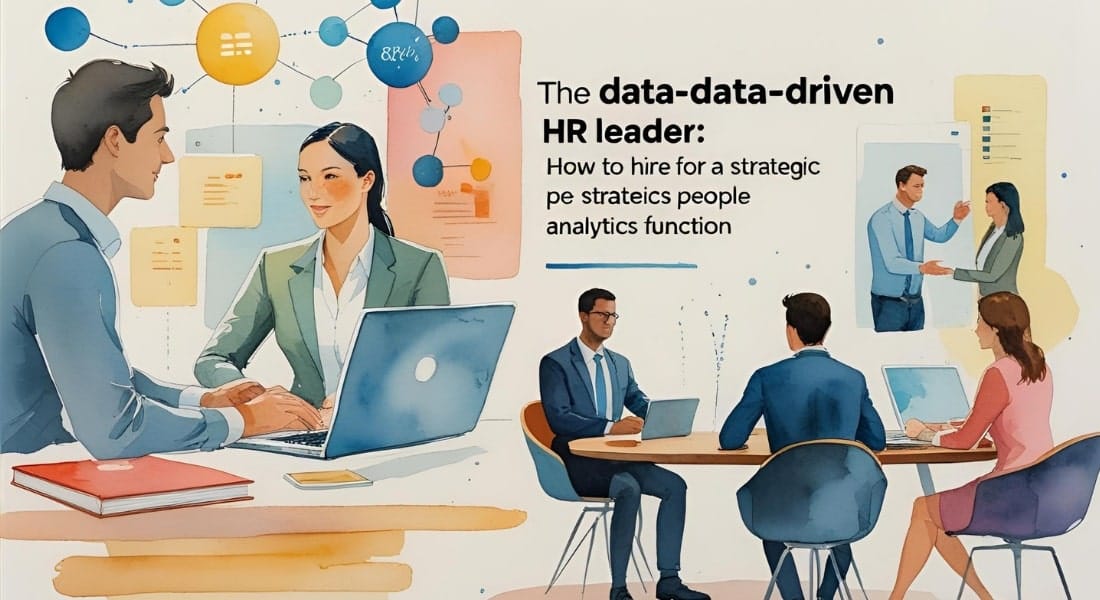For decades, HR was stereotyped as the “soft” side of business—driven by intuition, gut feelings, and interpersonal skills. But that image is rapidly fading. The most successful companies now treat their people data with the same rigor as financial data or customer analytics. Yet while many HR leaders claim to be “data-driven,” few are capable of building a robust people analytics function from the ground up. The challenge for executives is clear: hiring an HR leader who can translate people data into business outcomes. This article provides a concrete guide to interviewing and hiring that leader—the one who turns human capital into competitive advantage.
The Strategic Case for People Analytics
Before focusing on how to hire the right HR leader, it’s important to understand why a people analytics function matters.
From Reactive to Proactive
Most HR teams still operate reactively: turnover spikes, engagement dips, or performance lags—and HR scrambles to respond. A true people analytics function flips that equation. By analyzing historical and real-time data, HR can predict which teams are at risk of attrition, which managers may need coaching, and where engagement interventions will pay off. Proactive insights allow the business to address problems before they metastasize.
Speaking the Language of the Business
In the C-suite, numbers drive credibility. Finance speaks in terms of ROI, marketing in terms of pipeline metrics, and operations in terms of efficiency ratios. People analytics allows HR to join the conversation in quantifiable terms. Instead of saying, “Our training program seems to be working,” a data-driven HR leader can show, “This program increased sales productivity by 12% and generated $5 million in incremental revenue.”
Unlocking a Competitive Advantage
Talent is the ultimate differentiator, especially in industries where innovation and execution speed are critical. People analytics reveals the drivers of performance, engagement, and retention, enabling better decisions about who to hire, how to develop them, and how to keep them. Companies that understand their people better than competitors will build cultures that innovate faster, adapt better, and win more often.
What to Look for: The Three Pillars of a Data-Driven HR Leader
Hiring a leader who can build a strategic people analytics function requires evaluating more than just technical skills. The right candidate will excel across three pillars: data fluency and financial acumen, builder mentality and technology expertise, and strategic partnership and communication.
Pillar 1: Data Fluency & Financial Acumen
The Skill:
The first requirement is fluency in data and its financial implications. This leader doesn’t just pull reports—they interpret patterns, identify drivers, and connect people metrics directly to business outcomes. They understand how workforce decisions influence revenue, margin, and overall company performance.
Interview Questions:
- “Describe a time you used people data to challenge a business decision. What was the outcome?”
→ Looks for strategic courage, data-driven reasoning, and influence. - “If you were to build a dashboard for our CEO, what are the top three metrics you would include and why?”
→ Reveals their ability to prioritize metrics that actually matter to business performance. - “How would you connect our employee engagement scores to our financial performance?”
→ Tests their financial literacy and ability to link HR data to the P&L.
A strong candidate demonstrates not only comfort with numbers but the ability to use them as a strategic weapon.
Pillar 2: Builder Mentality & Technology Acumen

The Skill:
Most companies lack a fully formed people analytics infrastructure. The right HR leader must have a builder mentality—capable of designing systems, selecting tools, and integrating disparate data sources. They should understand the HR tech stack and how to align it with organizational priorities.
Interview Questions:
- “Walk me through how you would build a people analytics function from scratch, including the technology and team structure you’d need.”
→ Identifies whether they have a step-by-step plan and realistic vision. - “Tell me about your experience with HR Information Systems (HRIS). How have you leveraged one to improve data quality or decision-making?”
→ Surfaces practical experience with core systems. - “Beyond the standard HRIS, what other data sources would you want access to, and what would you use that data for?”
→ Assesses creativity in expanding analytics beyond traditional HR datasets (e.g., sales performance, customer satisfaction, productivity tools).
The goal is to find someone who is not just a consumer of data but a creator of capability.
Pillar 3: Strategic Partnership & Communication
The Skill:
Even the best analysis fails if it isn’t understood or acted upon. This leader must translate complex datasets into compelling narratives that resonate with executives, managers, and employees alike. They are not a “report generator” but a trusted advisor to the C-suite.
Interview Questions:
- “Describe a time you presented complex data to a non-technical audience. How did you make the insights understandable and actionable?”
→ Tests their storytelling ability and influence. - “How would you use people analytics to improve our relationship with the CFO?”
→ Reveals their ability to partner cross-functionally and frame HR data in financial terms. - “What do you believe is the single most important people metric for a high-growth company, and why?”
→ Demonstrates strategic vision and prioritization skills.
Candidates who thrive in this pillar bridge the gap between numbers and people, transforming raw data into organizational action.
The Practical “Prove-It” Test
Interviews can reveal a candidate’s knowledge, but they don’t always prove their ability to apply it. To separate theory from practice, incorporate a practical exercise.
The Exercise:
Provide a fictional dataset—say, turnover rates segmented by department, tenure, and manager. Ask the candidate to analyze it and present:
- The key insights they uncover.
- The potential root causes they infer.
- The strategic recommendations they would make to leadership.
The Purpose:
This test highlights three critical capabilities: analytical skill (can they find patterns?), business judgment (can they connect data to strategy?), and communication (can they explain insights clearly?).
The beauty of this exercise is its efficiency. It doesn’t require real company data, yet it provides a powerful lens into whether the candidate can actually do the work they describe. Too often, leaders are hired based on buzzwords; this exercise ensures you’re hiring based on capability.

Conclusion
The HR leader of the future is no longer defined by intuition alone. They are data-driven strategists who can build people analytics functions that anticipate problems, quantify ROI, and create competitive advantage. Hiring this leader requires a clear focus on three pillars: data fluency and financial acumen, builder mentality and tech expertise, and strategic communication. A well-designed interview process—topped with a practical analytics test—ensures you identify the right candidate. Companies that invest in this capability will transform HR from a cost center into a strategic growth engine. Hiring for this skill set is no longer optional—it’s essential.


